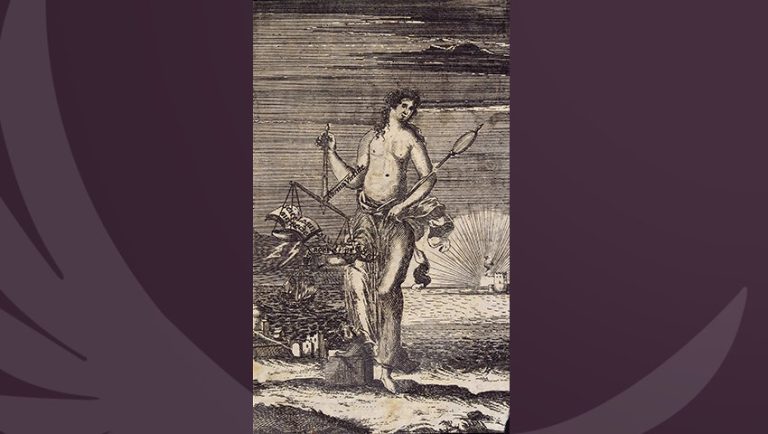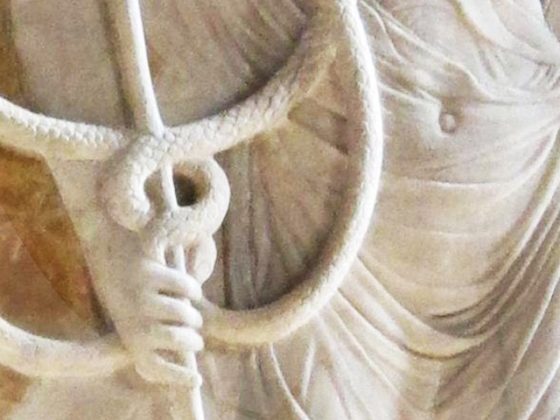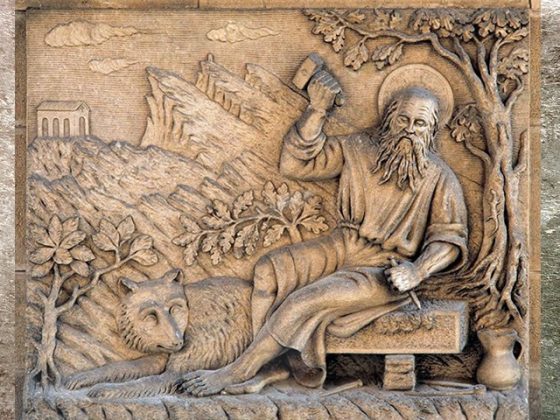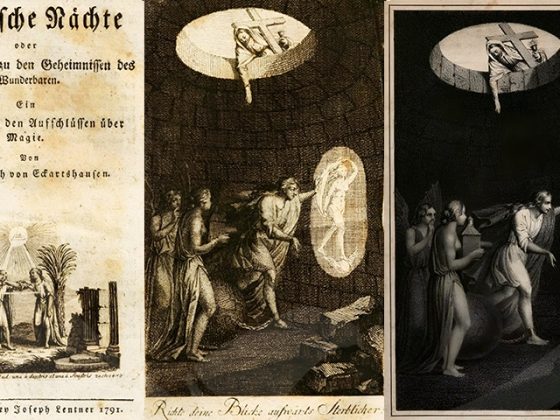Dearly beloved friends:
Allow me to write a few lines related to an engraving entitled…
…NORMA VIRTUTE
─'Law by means of virtue'─
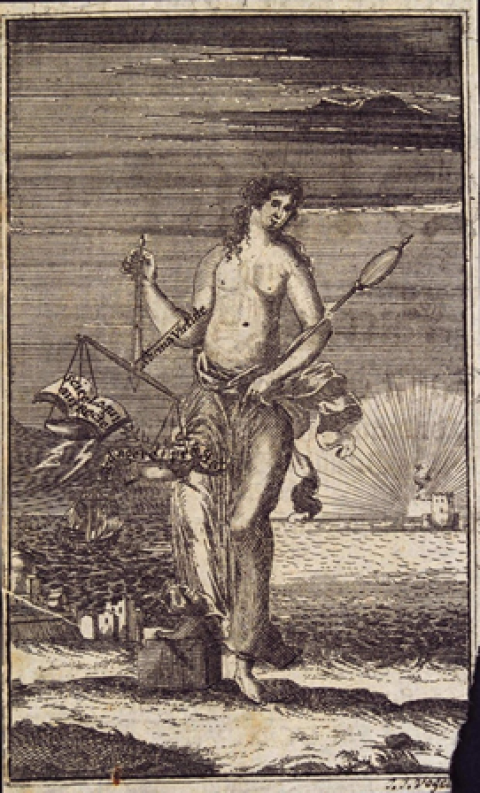
The present engraving takes us back into the mysteries of ALCHEMY, but this time intertwined with Greek mythology. It is not the first time that the Masters of the transmutatory art have turned to Greek myths to show us the great realities that exist in the background of the greatest of the arcana in the history of humanity.
However, I consider it would be prudent, before going into strictly alchemical matters, to add a few words by the V.M. Fulcanelli about the main image of the engraving in our study, let us see:
“As Justice’s essence and raison d’etre demand that she hide nothing, and as the search for, and manifestation of, truth obliges her to show herself to all in the full light of equality, the veil, half drawn back, must necessarily reveal the secret individuality of a second figure, artfully concealed under the form and attributes of the first. This second figure is none other than Philosophy.
In Roman antiquity, the peplum was a veil ornamented with embroidery used to dress the statue of Minerva, daughter of Jupiter, and the only goddess whose birth was marvelous. Indeed, mythology says that she sprung forth fully armed from the brain of her father, whose head, by the order of the master of Olympus, Vulcan had split. Hence her Hellenic name of Athena. A personification of the wisdom or knowledge of things, Minerva, must be regarded as the divine and creative thought, materialized in all nature, latent in ourselves as it is in everything that surrounds us.
“Alciat”, says Brother Noel, “represents Justice with the features of a virgin whose crown is golden and whose tunic is white, covered with an ample purple drape. Her eyes are soft and her bearing modest. She bears on her bosom a rich jewel, symbol of her inestimable value, and she has her left foot on a square stone”. The dual nature of the Magistery could not be better described, its colors, the high value of this cubic stone which carries Philosophy as a whole, masked for common people under the features of Justice.
Philosophy confers on those who espouse it a great power of investigation. She enables penetration of the intimate construction of things which she cuts short as with a sword discovering in it the presence of the spiritus mundi, of which the classical masters speak, and which has its center in the sun and draws its virtue and motion from the radiation of the heavenly body. She also gives knowledge of the general laws, rules, rhythms, and measures observed by nature in the elaboration, evolution, and perfection of created things (the scales). She finally establishes the possibility of acquiring sciences based on observation, faith, and written teachings.”
Having made the previous digression, let us now observe the details of the work of art which is the subject of our investigation.
First of all, we will say that the lady in our engraving –representing the goddess of Justice–holds in her right hand a scale with the following Latin inscription: “Norma Virtute”, which is to be interpreted as “Law by means of virtue“, which, in turn, we must understand in this way: no one becomes just if he is not first virtuous.
Similarly, another Latin inscription that we observe on the pages of a book tells us: “Scire aut loqui recte”. This means ‘knowing or speaking correctly'. This book is on one of the plates of the scales. Likewise, in the other plate of the same we find this other phrase: “Sed agere praestat”, all of which we must understand as ‘but it is better to act'…
What do those two phrases mean? ANSWER: Apart from knowing how to speak correctly, we also need to act. In other words: it is not enough to know the nature of things, but we must also put into practice what we know about them.
Transmutatory science is very demanding, and if we really want to go deeper into it, we need to match the precept with the example.
At the bottom of our engraving we can clearly see the image of the Sun expanding its rays. This means that the GREAT WORK is directed by the solar dynasties, who guide the devotee along the initiatory path.
The lady in our subject is near a lake representative of the Genesiac waters that should bring about our purification.
A detail to be taken into account in this engraving is also the mirror that the woman carries on her left arm. This mirror is the mirror of art or mirror of Alchemy, which allows us to know the progress or regression of our works.
The V.M. Fulcanelli tells us the following about this instrument:
“In the kingdom of sulfur” ─the Cosmopolitan insists─, “there is a mirror in which the whole world is seen. Whoever looks into that mirror can see and learn the three parts of the wisdom of the whole world, and in this way, he will become very wise in those three kingdoms just as Aristotle, Avicenna, and many others were who, like the rest of the masters, saw in that mirror how the world was created.” ─De Sulphure, Coloniae, 1616, p. 65.─.
Surely, the double secret of birth and death, impenetrable to the wisest “according to the century”, that of the creation of the world and of its tragic end in punishment for the greed and pride of men, equally immeasurable, are not the smallest visual revelations that the Mirror of Art provides the adept with.”
It must be understood that the kingdom of Sulfur refers to the kingdom of the Secret Fire. Obviously, the Sacred Fire will show the Initiate, in its advancement, a multitude of truths about himself and about the Universe.
On the other hand, quoting Fulcanelli, we add the following:
“The mirror of wisdom evidently bears no relation to the furniture used for the reflection of the image, even if it be made of metal, as in ancient Egypt, or of obsidian, as in the Rome of the Caesars, or of the crystal of fountains, in the remotest origins, or of the purest azorated glass in our modern times. However, it is the latter, in the form of a convex and inclined lens, that is held by Prudence [statue] with two opposite faces, guardian of the tomb of Francis II of France, in Saint Peter's Cathedral, in Nantes, with her three companions: Justice, Fortitude and Temperance.”
We will conclude the description of this engraving by alluding to the ship that we see at the bottom of the engraving. Such is the ship of the alchemist who sails the lustral waters to one day find his Philosopher's Stone…….
I now add a few sentences to be reflected upon:
“The mystery of love is more profound than the mystery of death.”
Oscar Wilde
“Thinking is a mystery, speaking is a mystery, man is an abyss.”
Balmes
“Mystery besieges us, and it is precisely what we all see and do that conceals the greatest sum of mysteries.”
Amiel
“Man's chief disease is restless curiosity about things he cannot know.”
Pascal
SURSUM CORDA.
─‘Lift up your hearts’─.
KWEN KHAN KHU


